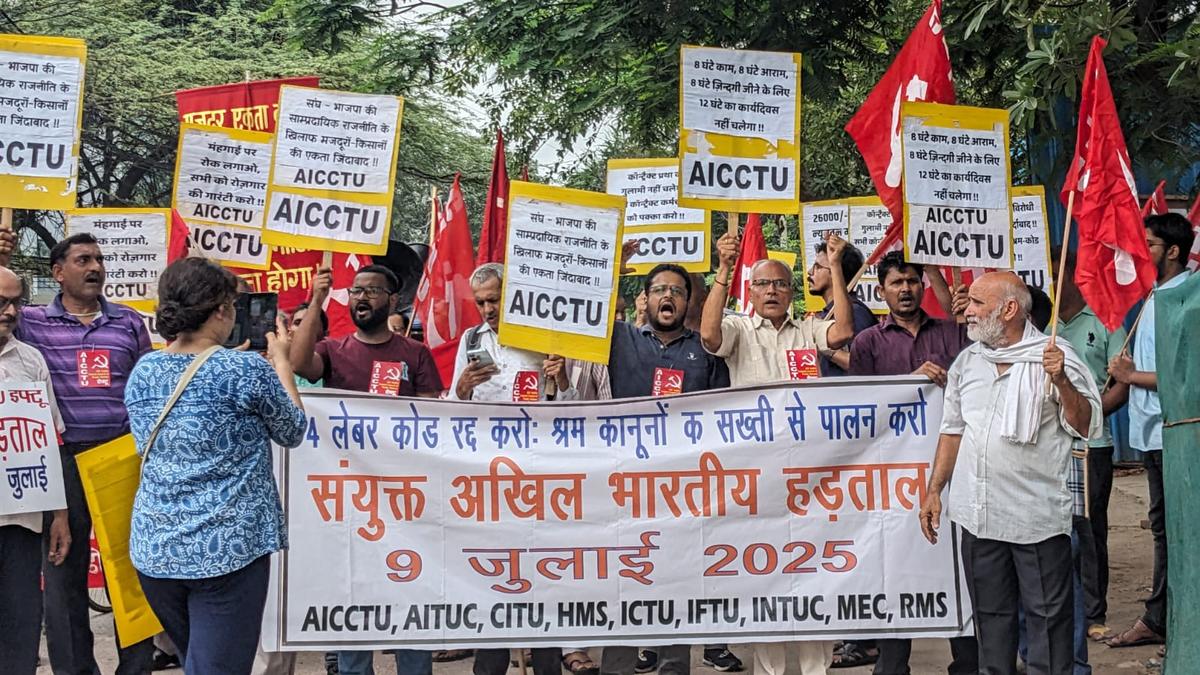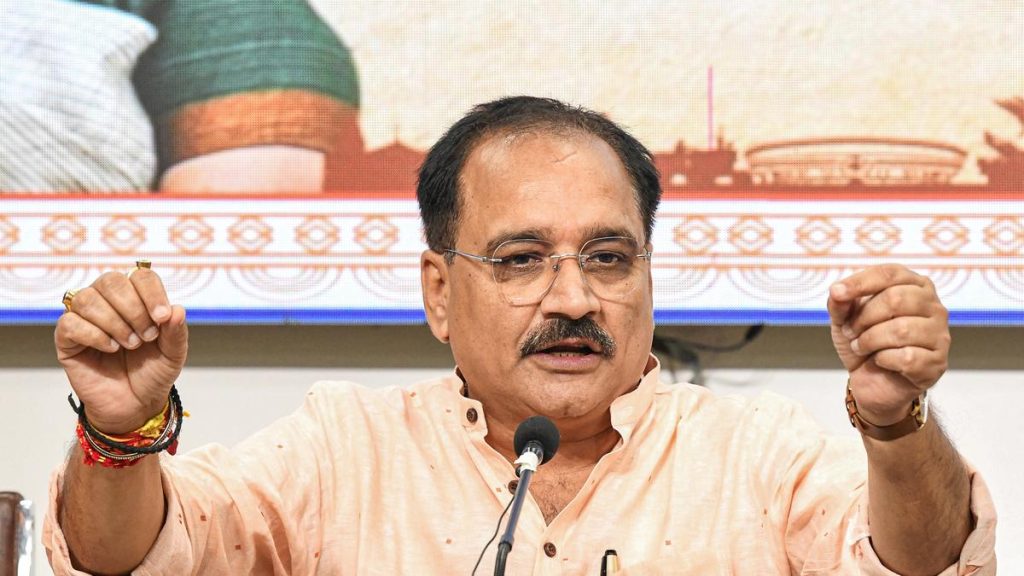Now Reading: Women Lead Bharat Bandh Protests in Haryana, Backed by Farmers and Workers
-
01
Women Lead Bharat Bandh Protests in Haryana, Backed by Farmers and Workers
Women Lead Bharat Bandh Protests in Haryana, Backed by Farmers and Workers

Fast Summary
- Government employees, industrial and scheme workers, construction labourers, farmers, and others held public meetings and protest marches across Haryana in response to a ‘Bharat Bandh’ called by central trade unions.
- Women workers – such as mid-day meal staff, ASHAs, and anganwadi workers – emphasized demands for regular jobs with equal pay for equal work.
- Protests targeted four “pro-corporate” labor codes introduced by the Center; Haryana Roadways buses stopped running on multiple routes as various department employees went on strike.
- Farmers joined the protests under SKM to push for their own issues: guaranteed Minimum Support Price (MSP), opposition to dairy tariff reductions under U.S. pressure,and resistance against power sector privatisation.
- Leaders of various organizations condemned government policies as “anti-worker” while advocating greater unity among all sections impacted by inflation, unemployment, privatisation efforts, or rising prices.
- Similar protests occurred in Delhi’s industrial zones like Okhla and Mayapuri.Automotive unions in gurugram-Manesar-Rewari supported demands but abstained from full strikes.
Indian Opinion analysis
The ‘Bharat Bandh’ highlights strong unity between diverse sections of society-industrial workers, farmers, scheme staff-as they rally together against perceived impacts of economic liberalization policies. The significant participation by women suggests growing advocacy around gendered labour concerns such as job regularization and equitable wages.
The simultaneous expression of discontent over labour reforms alongside broader socio-economic pressures like MSP guarantees or worries about privatisation indicates convergence between worker-farmer disputes. Such coordination between varied groups showcases potential challenges for policymakers attempting reforms while addressing public grievances tied to inflation or employment insecurity.
With major transport interruptions in Haryana yet limited disruptions elsewhere (e.g.,automotive hubs),regional discrepancies may shape how widespread dissatisfaction evolves further within India’s socio-economic landscape.






















